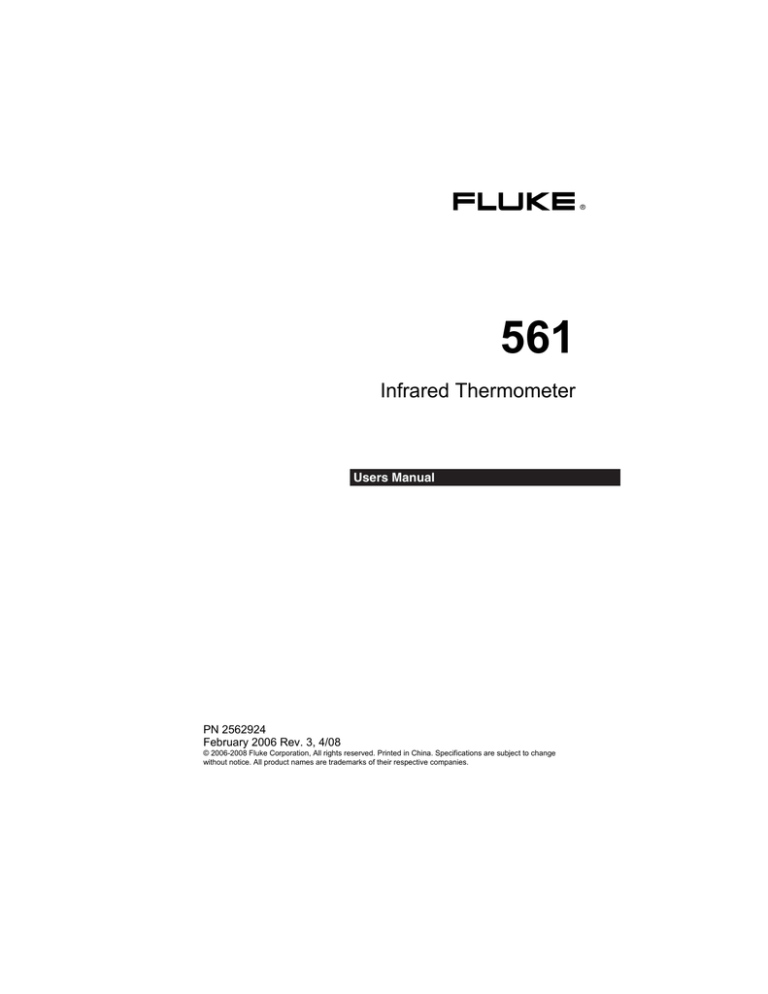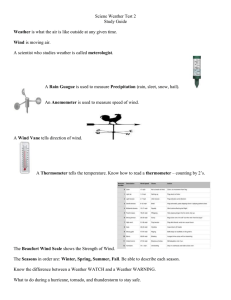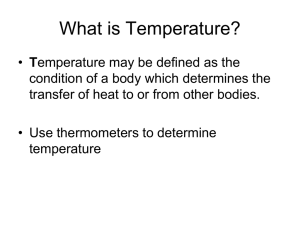
®
561
Infrared Thermometer
Users Manual
PN 2562924
February 2006 Rev. 3, 4/08
© 2006-2008 Fluke Corporation, All rights reserved. Printed in China. Specifications are subject to change
without notice. All product names are trademarks of their respective companies.
LIMITED WARRANTY AND LIMITATION OF LIABILITY
This Fluke product will be free from defects in material and workmanship
for two years from the date of purchase. This warranty does not cover
fuses, disposable batteries, or damage from accident, neglect, misuse,
alteration, contamination, or abnormal conditions of operation or handling.
Resellers are not authorized to extend any other warranty on Fluke’s behalf. To obtain service during the warranty period, contact your nearest
Fluke authorized service center to obtain return authorization information,
then send the product to that Service Center with a description of the
problem.
THIS WARRANTY IS YOUR ONLY REMEDY. NO OTHER WARRANTIES, SUCH AS FITNESS FOR A PARTICULAR PURPOSE, ARE EXPRESSED OR IMPLIED. FLUKE IS NOT LIABLE FOR ANY SPECIAL,
INDIRECT, INCIDENTAL OR CONSEQUENTIAL DAMAGES OR
LOSSES, ARISING FROM ANY CAUSE OR THEORY. Since some states
or countries do not allow the exclusion or limitation of an implied warranty
or of incidental or consequential damages, this limitation of liability may
not apply to you.
Fluke Corporation
P.O. Box 9090
Everett, WA 98206-9090
U.S.A.
11/99
Fluke Europe B.V.
P.O. Box 1186
5602 BD Eindhoven
The Netherlands
Table of Contents
Title
Page
Introduction ................................................................................
Contacting Fluke ........................................................................
Safety Information ......................................................................
Features .....................................................................................
Display .......................................................................................
Buttons and Connector ..............................................................
How the Thermometer Works ....................................................
Operating the Thermometer .......................................................
Locating a Hot or Cold Spot ...................................................
Distance and Spot Size ..........................................................
Field of View ...........................................................................
Emissivity ...............................................................................
Switching Between °C and °F.................................................
Using the Contact Temperature Probe ...................................
HOLD .....................................................................................
Maintenance ..............................................................................
Changing the Battery..............................................................
Cleaning the Lens...................................................................
Cleaning the Housing .............................................................
Troubleshooting .........................................................................
CE Certification ..........................................................................
Specifications .............................................................................
i
1
1
2
3
4
5
6
6
6
6
7
7
8
9
10
10
10
10
10
11
11
11
561
Users Manual
ii
561
Infrared Thermometer
Introduction
The Fluke 561 Infrared Thermometer (hereafter, the Thermometer) can determine the surface
temperature by measuring the amount of infrared energy radiated by the target’s surface or by
contact using a thermocouple probe. The Thermometer was designed specifically for use in
heating, ventilating, and air conditioning (HVAC) applications. This manual covers all versions
of the the Fluke 561. Note that the Japanese models indicate Celsius only.
Contacting Fluke
To contact Fluke, call one of the following telephone numbers:
USA: 1-888-44-FLUKE (1-888-443-5853)
Canada: 1-800-36-FLUKE (1-800-363-5853)
Europe: +31 40 267 5200
Japan: +81-3-3434-0181
Singapore: +65-738-5655
Anywhere in the world: +1-425-446-5500
For USA Service: 1-888-99-FLUKE (1-888-993-5853)
Or, visit Fluke's Web site at www.fluke.com.
To register your product, visit http://register.fluke.com.
1
561
Users Manual
Safety Information
XWWarning
A Warning identifies conditions and actions that pose hazards to the user. To
avoid electrical shock or personal injury, follow these guidelines:
• * Do not point laser directly at eye or indirectly off reflective surfaces.
• Before using the Thermometer inspect the case. Do not use the Thermometer
if it appears damaged. Look for cracks or missing plastic.
• Replace the batteries as soon as the battery indicator (B) appears.
• Do not use the Thermometer if it operates abnormally. Protection may be
impaired. When in doubt, have the Thermometer serviced.
• Do not operate the Thermometer around explosive gas, vapor, or dust.
• Do not connect the optional external probe to live electrical circuits.
• To avoid a burn hazard, remember that highly reflective objects will often
result in lower than actual temperature measurements.
• If the Thermometer is used in a manner not specified by the manufacturer, the
protection provided by the Thermometer may be impaired.
WCaution
To avoid damaging the thermometer or the equipment under test protect them
from the following:
• EMF (electro-magnetic fields) from arc welders, induction heaters, etc.
• Static electricity.
• Thermal shock (caused by large or abrupt ambient temperature changesallow 30 minutes for the Thermometer to stabilize before use).
• Do not leave the Thermometer on or near objects of high temperature.
Table 1 and Figure 1 show various symbols and safety markings that are on the Thermometer
and in this manual.
Table 1. Symbols
Symbol
W
X
*
P
Conforms to requirements of European Union and European Free
Trade Association (EFTA).
~
Do not dispose of this product as unsorted municipal waste. Go to
Fluke’s web site for recycling information.
B
„
2
Explanation
Risk of danger. Important information. See Manual.
Hazardous voltage. Risk of electrical shock.
Warning. Laser.
Battery
China metrology certification mark for measuring instruments
manufactured in the Peoples Republic of China (PRC).
Infrared Thermometer
Features
- LASER RADIATION
AVOID EXPOSURE
THIS APERTURE
IS EMITTED FROM
CAUTION
LASER RADIATION
- DO NOT STARE
INTO BEAM
630 - 670nm
WAVELENGTH
OUTPUT < 1mW PRODUCT
CLASS 2 (II) LASER
FDA 21CFR
COMPLIES WITH
1040.10 AND 1040.11
IEC 60825
COMPLIES WITH
AVOID EXPOSURE - LASER RADIATION
IS EMITTED FROM THIS APERTURE
CAUTION
LASER RADIATION - DO NOT STARE INTO BEAM
OUTPUT < 1mW WAVELENGTH 630 - 670nm
CLASS 2 (II) LASER PRODUCT
COMPLIES WITH FDA 21CFR
1040.10 AND 1040.11
COMPLIES WITH IEC 60825
efh010f.eps
Figure 1. Symbols and Safety Markings
Features
The Thermometer includes:
•
Single-spot Laser Sighting
•
Backlit Display
•
Hard Case
•
Current Temperature Plus MIN, MAX, DIF Temperature Displays
•
Easy Emissivity Selector
•
Type-K Thermocouple
•
Two AA Batteries
Thermometer features are shown in Figure 2.
3
561
Users Manual
Laser
Display
Trigger
AA
Batteries
(2)
Function Buttons
(+)
Battery
Cover
efh007f.eps
Figure 2. Infrared Thermometer
Display
The primary temperature display reports the current or last IR temperature read until the 7second hold time elapses.
The secondary temperature display reports current thermocouple temperature when a type-K
thermocouple is attached. When a thermocouple is not connected, the small temperature
display reports a choice of maximum, minimum, or difference between maximum and minimum
temperature.
You can toggle through the minimum, maximum, and difference IR temperatures anytime the
display is on. The MIN, MAX, and DIF temperatures are constantly calculated and updated
when the trigger is pressed. After the trigger is released, the MIN, MAX, DIF temperatures are
held for 7 seconds.
Note
When the battery is low, B appears on the display.
The last selection (MIN/MAX/DIF) is maintained on the secondary display even after the
Thermometer has been turned off, providing the batteries have not failed.
4
Buttons and Connector
2
1
3
8
4
5
7
6
efh01f.eps
A
B
C
D
E
F
G
H
Laser “On” symbol
SCAN or HOLD
°C/°F symbol (Celsius/Fahrenheit)
Primary temperature display
Secondary temperature display
Emissivity LO, MED, HI
Temperature values for the MIN, MAX, DIF, KTC.
KTC indicates the thermocouple temperature.
Low Battery symbol. Appears when the battery charge is <25 %.
Figure 3. Thermometer Display
Buttons and Connector
Button/
Connector
C
Description
C
Press
and then press
MAX, and DIF options.
A to toggle between the MIN,
A
A
The
button is used to show the MIN, MAX, and DIF
functions in the secondary display, whichever was pressed
most recently.
D
Selects the emissivity setting. You can toggle between LO
(0.3), MED (0.7), or HI (0.95) using .
A
K-type thermocouple probe used to make contact
temperature measurement.
5
561
Users Manual
How the Thermometer Works
Infrared thermometers measure the surface temperature of an opaque object. The
Thermometer’s optics sense infrared energy, which is collected and focused onto a detector.
The Thermometer’s electronics then translate the information into a displayed temperature
reading which appears on the display. The laser is used for aiming purposes only.
Operating the Thermometer
The Thermometer turns on when you press the trigger. The Thermometer turns off when no
activity is detected for 7 seconds.
To measure temperature, aim the Thermometer at the target, pull and hold the trigger. Release
the trigger to hold a temperature reading.
Be sure to consider distance-to-spot size ratio and field of view. The laser is used for aiming
only.
Locating a Hot or Cold Spot
To find a hot or cold spot, aim the Thermometer outside the target area. Then, slowly scan
across the area with an up and down motion until you locate the hot or cold spot. See Figure 4.
efh014f.eps
Figure 4. Locating a Hot or Cold Spot
Distance and Spot Size
As the distance (D) from the target being measured increases, the spot size (S) of the area
measured by the unit becomes larger. The spot sizes indicates 90 % encircled energy. The
maximum D:S is obtained when the Thermometer is 900 mm (36 in) from the target resulting in
a spot size of 75 mm (3 in). See Figure 5.
6
Operating the Thermometer
75 mm @
900 mm
132 mm @
1500 mm
S
38 mm @
300 mm
1.5 " @
12 "
3"@
36 "
5.3 " @
60 "
D
D:S=12:1
efh005f.eps
Figure 5. Distance and Spot Size
Field of View
Make sure that the target is larger than the spot size. The smaller the target, the closer you
should be to it. See Figure 6.
Yes
No
efh004f.eps
Figure 6. Field of View
Emissivity
Emissivity describes the energy-emitting characteristics of materials. Most organic materials
and painted or oxidized surfaces have an emissivity of about 0.95.
If possible, to compensate for inaccurate readings that may result from measuring shiny metal
surfaces, cover the surface to be measured with masking tape or flat black paint
(<148 °C/300 °F) and use the high emissivity setting. Allow time for the tape or paint to reach
the same temperature as the surface beneath it. Measure the temperature of the tape or
painted surface.
If you cannot paint or use tape, then you can improve the accuracy of your measurements with
the emissivity selector. Even with the emissivity selector, it can be difficult to get a completely
accurate infrared measurement of a target with a shiny or metallic surface. Experimentation,
using the probe to determine benchmark temperatures, and experience will help you choose the
best setting for specific measurements.
The Thermometer has three emissivity settings: low (0.3), medium (0.7), and high (0.95). Refer
to Table 2. The reference to emissivity settings in the table are suggestions for typical
situations. Your particular situation may differ.
7
561
Users Manual
Table 2. Surface Emissivity
Measured
Surface
Aluminum
Oxidized
Measured
Surface
Switch Setting
Iron, Cast
Low
Alloy A3003
Oxidized
Low
Molten
Low
Low
Roughened
Low
Iron, Wrought
Burnished
Low
Lead
Oxidized
Low
Brass
Dull
Copper
Oxidized
Medium
Electrical Terminal
Blocks
Medium
Haynes
High, Medium
Unoxidized
Oxidized
Alloy
Switch Setting
High
Rough
Low
Oxidized
Low, Medium
Molybdenum
Oxidized
Low, Medium
Nickel
Medium
Inconel
Oxidized
Low
Platinum
Oxidized
High, Medium
Sandblasted
Medium
Electoropolished
Low
Iron
Oxidized
High, Medium
Rusted
Medium
Black
High
Steel
Cold-Rolled
High
Ground Sheet
Medium
Polished Sheet
Low
Zinc
Oxidized
Low
Switching Between °C and °F
Open the battery compartment and locate the switch positioned between the left side of the
battery near the Thermometer wall. To toggle between °C and °F, use a small screwdriver or
paper clip to move the switch to the desired position. See Figure 7.
8
Operating the Thermometer
Switch
Figure 7. Switching Between °C and °F
efh012f.eps
Using the Contact Temperature Probe
XWWarning
To avoid electrical shock or personal injury, do not connect the optional external
probe to live electrical circuits.
Connect the probe to the input on the top of the Thermometer. The probe temperature and KTC
appears in the secondary display. The live infrared temperature continues to show in the
primary display. Connect the temperature probe as shown in Figure 8.
Note
With the probe inserted, the Thermometer stays on for 10 minutes (with laser off)
after the trigger is released.
efh009f.eps
Figure 8. Connecting the Temperature Probe
9
561
Users Manual
Table 3 lists recommended Fluke temperature probes for use with the Thermometer:
Table 3. Recommended Temperature Probes
Probe
Usage
80PK-25
The piercing probe is the most versatile option. Good for checking air
temperature in ducts, surface temperature under carpets/pads, liquids,
thermometer wells, vent temperatures, and for penetrating pipe insulation.
80PK-1
The general purpose bead probe is an alternative, for quick, accurate surface
temperatures and air temperatures within ducts, vent temperatures.
80PK-8
Pipe clamp probes (2) are essential for tracking continuously changing
temperature differentials on hydronic tubing and pipe loops, and good for
quick, accurate refrigerant temperatures.
80PK-26
The tapered probe is a good general-purpose gas and surface probe, with a
good length and low mass tip casing for faster reaction to surface and air
temperatures.
80PK-9
The insulation piercing probe provides a sharp tip to pierce pipe insulation
and flat probe tip for good surface thermal contact, air temperatures within
ducts, and vent temperatures.
80PK-11
The Velcro pipe probe is a convenient way to attach a thermocouple to a
pipe while keeping hands free.
HOLD
The display will remain activated for 7 seconds after the trigger is released. HOLD appears in
the upper middle of the display. When the trigger is pulled again, the Thermometer will begin
measuring in the last function selected.
Maintenance
Changing the Battery
To install or change the two AA batteries, open the battery compartment and insert the batteries
as shown in Figure 2.
Cleaning the Lens
Blow off loose particles using clean compressed air. Carefully wipe the surface with a moist
cotton swab. The swab may be moistened with water.
Cleaning the Housing
Use soap and water on a damp sponge or soft cloth.
WCaution
To avoid damaging the Thermometer, do NOT submerge it in water.
10
Troubleshooting
Troubleshooting
Symptom
--- (on display)
B
Blank display
Laser does not
work
Problem
Target temperature is over or
under range
Low battery
Possible dead battery
1. Low or dead battery
2. Ambient temperature above
40 °C (104 °F)
Action
Select target within
specifications
Replace battery
Check and/or replace battery
1. Replace battery
2. Use in area with lower
ambient temperature
CE Certification
The Thermometer conforms to the following standards:
•
EN61326-1 EMC Standard
•
EN61010-1 Safety Standard
•
EN60825-1 Laser Standard
Certification testing was conducted using a frequency range of 80 to 1000 MHz with the
instrument in three orientations.
Specifications
Infrared
Measurement Range .................................................... -40 °C to 550 °C (-40 °F to 1022 °F)
Spectral Range............................................................. 8 to 14 microns
Accuracy ...................................................................... ±1 % or ± 1 °C (2 °F); <0 °C (32 °F),
±1 °C (2 °F) ± 0.1°/1° (Assumes
ambient operating temperature of 23
to 25 °C (73 to 77 °F))
Repeatability................................................................. ±0.5 % of reading or ±1 °C (2 °F)
Display Resolution........................................................ 0.1 °C (0.1 °F)
Secondary Display Information..................................... Maximum, Minimum, Differential,
KTC
Response Time (95 %)................................................. 500 ms
Distance to Spot (D:S).................................................. 12:1
Emissivity Adjustment................................................... Three settings: low (0.3), medium
(0.7), high (0.95)
Contact Probe Input
Input Temperature Range ............................................ -40 °C to 550 °C (-40 °F to 1022 °F)
Input Accuracy...............................................................................Input accuracy ± 1.1 °C (± 2 °F)
Display Resolution........................................................ 1 °C (1 °F)
Laser
Sighting ........................................................................ Single point laser
Power ........................................................................... Class 2 (II) operation; Output <1 mW,
wavelength 630 to 670 nm
11
561
Users Manual
Wrap Thermocouple Probe (model-specific)
Type..............................................................................Type K with miniconnector and
Velcro strap, ASTM E230-03
Standard Tolerance
Measurement Range ....................................................0 °C to 100 °C (32 °F to 212 °F)
Accuracy .......................................................................±2.2 °C (4.0 °F)
Total Length..................................................................505 mm (20 in) cable terminated with
a Type K thermocouple inside a
495 mm (19.5 in) nylon Velcro cuff
Bead Thermocouple Probe (model-specific)
Type..............................................................................Type K with miniconnector
Measurement Range .................................................... -40 °C to 260 °C (-40 °F to 500 °F)
Accuracy .......................................................................±1.1 °C (2.0 °F) from 0 °C to 260 °C
(32 °F to 500 °F). Typically within
1.1 °C
(2.0 °F) from -40 °C to 0 °C
(-40 °F to 32 °F)
Cable Length ................................................................1 m (40 in) terminated with Type K
thermocouple beads
Electrical
Power Supply................................................................2 AA Batteries (alkaline or NiCD)
Power Consumption......................................................At least 12 hours battery life
Physical
Weight...........................................................................0.322 kg (0.7099 lb)
Size...............................................................................17.69 cm (6.965 in) x 16.36 cm
(6.441 in) x 5.18 cm (2.039 in)
Environmental
Operating Temperature Range .....................................0 °C to 50 °C (32 °F to 120 °F)
Relative Humidity ..........................................................0 to 90 %, noncondensing up to
30 °C (86 °F)
Storage Temperature ....................................................-20 °C to 65 °C (-4 °F to 150 °F)
Optional Accessories ....................................................Soft Case
12




